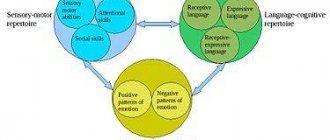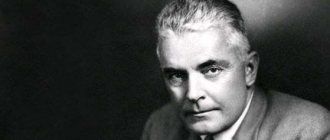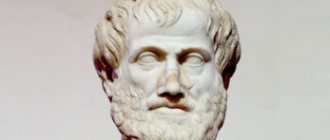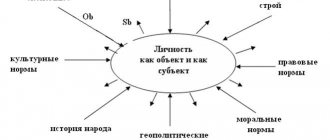The 20th century was rich in scientific discoveries in the field of psychology. Different directions and approaches to human research have tried in every possible way to answer the question of what humanity is. In the wake of the passion for positivism and the search for accurate research methods, the most popular psychological concept has long been considered behaviorism, which implied the idea that a person is always a creation of surrounding circumstances, and completely excluded the importance of consciousness and the internal characteristics of the individual.
It was in the spirit of behaviorism that the theory of operant conditioning was formulated by the American psychologist Burres Skinner, who argued: human behavior is determined and therefore predictable.
In this article we will take a closer look at Skinner's most prominent concept, which has been repeatedly criticized for manipulating human behavior, but at the same time its proponents have fruitfully used it to introduce new character traits.
Who is Skinner?
An outstanding American psychologist who lived in the 20th century. He made significant contributions to the development of behaviorism. He is best known for his theory of operant conditioning. In addition to his achievements in psychology, Burres Skinner was an excellent inventor. One of the scientist’s inventions is a box named after him - the Skinner box. This design is intended to explore the principles of operant conditioning.
Skinner pioneered the work of functional analysis. It was he who proposed it as a method for studying behavior.
It is known that in 1958 the famous psychologist was awarded the prize “For Outstanding Contribution to the Development of Science.” And this award was presented by the American Psychological Association. It was noted that few American psychologists were able to make such a significant contribution to the development of psychology.
In 1972, the same Association recognized Burres Frederick Skinner as the most outstanding psychologist of the 20th century. The second place at that time was taken by S. Freud.
The famous psychologist has hundreds of articles and several dozen scientific books to his credit.
Skinner's theory of behaviorism is a breakthrough in the science of psychology. And it will be discussed below.
Criticism of Skinner and his scientific contributions to the development of psychology
Despite the widespread approval of Skinner's scientific contributions by behaviorists, many famous psychologists - Erich Fromm, Noam Chomsky, Steven Pinker - did not agree with his position. They criticized Skinner for neglecting human feelings, cognitive abilities and the role of human drives. Therefore, Skinner’s “psychology” for Fromm, for example, was the science of manipulating human behavior.
However, despite the sharp criticism, Skinner's scientific results also bore a lot of fruit. It is not for nothing that in 1972 the American Psychological Association included Skinner among the most outstanding psychologists of the twentieth century. His ideas and observations have been repeatedly confirmed in various fields of application, where the most successful areas have been teaching communication skills, training confidence skills, self-control, and treating anxiety, migraines, hypertension and muscle tension.
By the way, about forming useful habits. If you want to understand how you can effectively cope with stress, anxiety and fears, pay attention to our online program “Mental Self-Regulation”. With its help, in 6 weeks you can learn effective ways to maintain mental clarity and cope with difficult situations at work, at university and in personal relationships.
As for Skinner's operant conditioning, there are many ways to approach it, and it's a personal choice. But I still want to believe that a person is not just animal material, guided only by reactions, but a conscious being, capable of always and everywhere relying on reason, making thoughtful decisions and acting in the best possible way.
We wish you success and look forward to your lessons!
We also recommend reading:
- Storytelling
- Wundt's method of studying psychology
- Applied behavior analysis: from stimuli to responses
- Criticism of positivism: briefly about the main anti-positivist concepts
- Abraham Maslow "Motivation and Personality" - summary
- Psycholinguistics as a tool for in-depth study of speech and language
- Behaviorism: basic principles, representatives and directions
- Situationism in psychology and human behavior
- A Brief History of Psychology: From Antiquity to the Present Day
- The Rosenthal effect or how to wisely lead a team
- The emergence of positivism
Key words:1Psychoregulation
Operant behavior
Skinner's operant behaviorism, or operant behavior, is any action aimed at achieving a specific goal. It is influenced by antecedents and consequences.
Thus, the theory of operant conditioning is as follows: a learning process based on the actions of antecedents and consequences.
Consequences shape operant behavior. And therefore, its frequency increases or decreases in the future.
Antecedent factors influence the manifestation of behavior in the present tense.
Briefly about Skinner's behaviorism: the formation of operant behavior occurs as a result of “operating with consequences.” That is, certain conditions are created in the environment.
Prerequisites for operant behavior
In Skinner's psychology, the main emphasis is on the fact that a person makes his choice under the influence of some events in the past. Skinner argued that environmental factors lead us to certain decisions and actions. The central source of our behavior is not people themselves (their feelings, minds, plans or goals), but their response to influences from the environment. To understand why we act the way we do, according to Skinner, we need to know the circumstances that stimulate us to act.
This is why the world around us shapes us into who we are: our actions depend on the knowledge of what is good and what is bad, and although we believe that this is our internal decision, it is the external environment that has shaped our understanding of what is good and what is bad. what is wrong. People are the result of the adaptation of each person to the external environment in which he was born.
According to Skinner's philosophy, there is no need to spend so much energy on the moral development of an individual, because “character traits” are the accumulation of reactions to certain external environmental conditions. Therefore, the result will be much better if we devote more effort and attention to research into the external environment and conditions on which the individual depends. Thus, if we create better environmental conditions, we will get better individuals.
In experimental psychology, it is customary to distinguish two processes responsible for the development and consolidation of forms of response to any needs:
- training – the emphasis is on the form of training of the teacher;
- learning, learning - what is important here is the learning conditions, which include three different ways of influencing the organism (human or animal): reactive behavior, cognitive learning and operant behavior (or learning as a result of operant conditioning).
Today, the theory of operant behavior is perhaps Skinner's best-known contribution to the development of experimental psychology. Skinner argued that people are nothing more than thinking machines that can change their actions.
Creating conditions
These conditions, according to Skinner's behaviorism, are created through positive or negative reinforcements. Positive reinforcement strengthens the manifestation of a particular behavior in the future. Negative, on the contrary, extinguishes it.
For example, a child is constantly naughty in the store. Mom buys him a chocolate bar or a toy, the baby stops his whims. Chocolate is a positive reinforcement in this situation for the little capricious one. He has already developed a clear algorithm of behavior, and the child knows that if he starts a tantrum in the store, he will receive a kind of reinforcement for this.
Another example. A child throws a tantrum in a store. Mom ignores. The child screams even more, tries to fall on the floor and fight in hysterics. His mom spanks him hard and takes him out of the store without buying anything. The second time the baby again turns on this behavior system, and again receives a spanking. It is unlikely that he will want to be spanked for the third time. The child begins to behave calmly in the store, without trying to be capricious. And why? Because spanking is negative reinforcement. And the baby doesn’t like this method, so he will try to avoid it in the future.
Skinner box
According to the concept of operant behavior, conditioning can be used to control the behavior of others for self-control. To regulate personal behavior, positive reinforcement for action is necessary.
Burres Skinner experiment
- A hungry rat was placed in a special box. By pressing the lever, the animal received food. Over time, the experimental rat learned (positively) that pressing the lever would get the treat. This skill has stuck.
- The rat was again placed in the box, but pressing the lever was accompanied by the delivery of a current. Each shock created an unpleasant sensation in the animal's memory (negative reinforcement). The current conducted through the paws forced the developed form of behavior to come to naught - punishment.
- The last phase of the experiment: the rat is placed in a box. When the lever was pressed, the rat did not receive a shock, but it did not receive food either. The animal did not receive positive or negative reinforcement, so the skill faded.
Burres Skinner's experiments made it possible to study the process of learning in organisms and ways to control it.
In the 1960s, American public psychiatric clinics began to use the results of the experiment to work with people with schizophrenia, a personality disorder.
“Patients with schizophrenia began to dress themselves and eat, knowing that a cigarette would be a reward for them” [3].
Behavior reinforcement
The principle of behavior reinforcement is a process that occurs in the environment after a behavior has already been generated and expressed.
Reinforcement occurs immediately after the behavior occurs.
Positive reinforcement is the presentation of a stimulus after the behavior has been demonstrated. It leads to its strengthening in the future.
Negative reinforcement is a stimulus that is given immediately after a behavior has occurred and reduces its subsequent likelihood of occurring.
According to Skinner's operant behaviorism, negative reinforcement is liberating. Having received it once, a person will subsequently strive to free himself from the strengthening of the unpleasant stimulus.
Types of amplification processes
B. Skinner's behaviorism speaks of two types of these processes: direct and indirect. The first are processes that involve external environmental stimuli that have a direct impact on humans. They, in turn, are divided into:
- Positive - attention, sleep, food.
- Negative - avoiding an unpleasant person.
Direct processes are automatic. They, like mediocre ones, are divided into positive and negative.
Behaviorism in psychology
The key idea of this direction of psychology is that all human behavior is a consequence not of thoughts and feelings, but of a reaction to external stimuli. Thus, there must always be a combination of two elements:
- Stimulus. A certain influence of the external world that occurred at the moment or had an impact on a person earlier.
- Reaction. Actions taken to adapt to the impact.
Often there is also a third element – reinforcement. This is an additional factor that can influence a person's decision. There are two possible forms of reinforcement:
- positive (encourages you to react and remember this reaction as correct);
- negative (forces you to refrain from reacting and refrain from it in the future).
Positive reinforcement can be praise or encouragement. Negative: criticism or punishment.
Behaviorists do not consider internal motives as factors determining behavior. At the same time, they do not deny them, but believe that they are extremely difficult to study objectively, and therefore will negatively affect the accuracy of the scientific model. In the very definition of what behaviorism is, there is a statement that it considers only external stimuli and the reactions that follow them.
Behavioral science research has two main goals:
- Predict a reaction given a stimulus (or set of stimuli).
- Identify a stimulus by a reaction (or to cause a reaction).
Initially, psychologists believed that human behavior is unpredictable and depends on many internal factors that cannot be taken into account. But after behaviorism became one of the key trends in psychology, the concept changed somewhat. Understanding what stimuli can provoke certain actions allows us not only to predict human behavior, but also to influence it, achieving the desired result.
Processes of weakening behavior
Skinner's behaviorism also includes weakening processes. What it is? It is a process of punishment or weakening that occurs after a behavior has occurred. And it leads to a weakening of unwanted behavior in the future.
These processes are divided into positive and negative.
Positive reduction is a process in which, following the occurrence of a behavior, an aversive stimulus is provided, resulting in a decrease and/or reduction in the behavior in the future.
Negative attenuation is the process of eliminating pleasurable stimuli after the presentation of an undesirable behavior, so that future occurrences of the behavior will be reduced or reduced.
Pros and cons of behaviorism
Behaviorism is a well-developed direction in modern psychology with a solid scientific foundation. However, there are certain limitations in its use, since it has both advantages and disadvantages. Practicing psychologists usually take them into account when choosing which tool to use to achieve the best effect.
The main advantages of behaviorism are that it:
- became one of the most important areas in psychology, expanded it, made it possible to make it not only an applied, but also a more objective science;
- has proven to be an effective tool for studying, explaining, predicting, and influencing behavior;
- established behavioral patterns quite reliably.
Opponents of behaviorism criticize it for the following disadvantages :
- consciousness, will, motivation, reflection and other human thought processes are ignored;
- a person is considered as an animal, and all forms of his behavior are considered as a system of instincts and reflexes;
- all behavioral skills come down to basic reactions to stimuli;
- Behaviorism does not explain why a person strives to satisfy the needs at the top of Maslow's pyramid.
Antecedent factors
One of the stages of Skinner's behaviorism includes various incentives and motivational operations.
Motivational operations increase or decrease the effectiveness of a particular stimulus to strengthen or weaken behavior. They are divided into stimulating and suppressing.
Incentives increase motivational value. This means that the likelihood of behavior occurring increases.
Suppressors, in turn, reduce the motivational value of the stimulus, reducing the likelihood of a particular behavior occurring.
Incentives
They influence behavior due to past experiences. They can be divided into three options.
- A reinforcing consequence will occur after the behavior.
- There will be no aggravating effects.
- An unpleasant consequence will occur that will lead to weakened behavior in the future.
That is, the first option is a stimulating influence. A behavior will be more likely to occur because it has been reinforced in the past in the presence of a given stimulus.
The second option is suppressive influence. The behavior will not occur because in the past, when exposed to a given stimulus, an extinction process occurred.
The third option is prohibitive influence. The behavior will not occur because an aversive stimulus occurred in the past in the presence of the given stimulus, which weakened it.
Types of operant conditioning
Frederick Skinner divided the mechanism of reinforcement into three types:
- Reinforcement with rewards. Positive reinforcement of an action increases the likelihood that it will be repeated because the specific behavior led to positive consequences.
- Reinforcement through punishment. The body will try to avoid a certain action if it brings negative consequences.
- If an action has neither negative nor positive consequences, it disappears over time.
Positive reinforcement stimulates the body to engage in behavior reinforced by the reward. Punishment, on the contrary, reduces the likelihood of using the taught skill in the future.
Skinner's radical behaviorism
To understand what it is, you need to know its relationship to the theory of S. Freud. Skinner believed that he had made a colossal discovery that human behavior is largely determined by unconscious reasons. However, he fundamentally disagreed with Freud regarding his invention of the mental apparatus and accompanying processes to explain human behavior.
According to Skinner, behavioral processes have nothing to do with behavior. Mental links create only a problem for explaining behavior.
Skinner believed that a reflex is the concept of a relationship between a stimulus and a response to that stimulus. Thus, if the body receives reinforcement for its behavior, then it strengthens. The body remembers them, and accordingly, a certain type of behavior is learned and formed. If there is no reinforcement, then behavioral acts that are not supported by anything disappear from the body’s behavioral repertoire.
This can be called reflexive behavior or involuntary. Its main difference from the operant one is that the latter cannot be caused. It's voluntary. And reflex behavior is caused by one stimulus or another, no matter whether conditioned or unconditioned. This theory coincided with the opinion of the Russian scientist I. Pavlov.
Operant behavior theory
According to the theory of behavioral psychology, behaviorism, the external environment is the most important factor in the formation of skills, and the associative connections that the body creates as a result of life experiences play a key role.
If Pavlov deduced the pattern of formation of conditioned reflexes, then Skinner went even further: he described his scientific observations and possible ways of influencing the behavior of an organism, and called them “operant conditioning” (or operant behaviorism) - the process of forming associations between behavior and its consequences. According to Skinner, there are three types of human behavior:
- unconditional reflex;
- conditioned reflex;
- operant.
The idea of operant conditioning is to study the formation of human behavior. It was first formulated by the analogy of observing the reactions of animals in laboratory conditions. Therefore, “conditioning” is the creation of necessary conditions that make it possible to control human behavior.
Conditioning is a deliberate step-by-step process that allows you to create the necessary controllable conditions, due to the impact of which a person’s state, his behavior and reactions to subsequent circumstances change. “Operant” (from the word “operation”) means an action that has an impact on the environment. Therefore, by operant conditioning, Skinner meant a form of learning in which spontaneous behavior is perceived as desirable. Skinner's main emphasis in operant conditioning was not on the person's reaction, but on the action - the action that affects the person.
Therefore, the principle of operant conditioning can be defined by the fact that human behavior is controlled by its consequences: positive repeated experiences in the past form a model of reaction to a similar situation in the future.
As an example of the action of operant conditioning, one can imagine the following situation:
Julian and his daughter Anne went to the cinema. Julian bought a bag of different candies. He handed the bag to Ann, who went through them all until she found the blue one, which she immediately pulled out and put in her mouth. One explanation for her choice is that, as a result of past experience, she identified the blue color of the candy with a pleasant taste.
Developing his interpretation of what psychology should be, Skinner tried to prove that human behavior is always dependent on the external environment: choosing a movie, opening the door in response to a call, holding a partner's hand when he asks are all examples of operant behavior.
At one time, Skinner substantiated the laws that he called the law of operant conditioning and the law of subjective assessment of the likelihood of consequences. With this statement, Skinner proposed his solution to modern social problems, the creation of behavioral technology that would allow manipulating people's negative behavior and help create positive reactions. He proposed changing such traits as pride, the desire for power, aggression, and filling people with a clear understanding of meaning and goals.
Today, operant conditioning is viewed by psychologists in two main forms :
- Instrumental learning - it is characterized by reinforcement of random behavior through rewards and punishments. The effect on a person occurs due to the activation of nervous activity.
- Creative learning is aimed at influencing the mind and activating creative abilities in the right direction.
Rules for effective operant conditioning:
- Simple instructions.
- Easy start.
- Positive learning process.
- Regular reinforcement system.
- Clearly methodical learning process.
One of the key ideas in Skinner's concept is reinforcement, or “sequential guidance towards the desired response.” He described four modes of reinforcement depending on the required form of response:
- with a constant ratio;
- at regular intervals;
- with variable ratio;
- with variable intervals.
Skinner considered the use of reinforcing stimuli , which he divided into three types:
- Primary reinforcers are water, food, sex, etc.
- Secondary (conditioned) reinforcers - affection, attention, money, praise, etc. - have a strong influence on human behavior;
- Positive and negative reinforcements (aversive) and punishments.
Also in operant conditioning there are three types of learning :
- trial and error method;
- formation of an automated response;
- imitation by observing and reproducing the desired model of behavior (there are two forms - pure imitation and vicarious, that is, repetition with understanding).
Thus, during operant learning, a person influences the external environment, and, obtaining the desired result, increases the likelihood of repeated behavior. And also vice versa: if during the exposure the result was negative, the person will tend to avoid such an experience.
Human control
Education in the concept of behaviorism by B. Skinner is based on the fact that a person’s personality is a set of physical reactions that arise in the presence of previous factors and consequences.
Human behavior is shaped by reinforcements. Most often, based on the positive. It can also be formed under the influence of negative reinforcement.
Knowing this, human behavior can be controlled based on:
- Positive reinforcement of correct reactions. This contributes to their consolidation in the behavior of the individual.
- Subjective value of reinforcement. That is, based on what is most stimulating for a given individual.
- Operant conditioning. The individual knows that his behavior may be followed by negative reinforcement. To avoid negative consequences, a person is quite capable of abandoning a particular type of behavior.
- Subjective probability of consequences. If a person realizes that the likelihood of negative reinforcement arising from his actions is small, he is willing to take risks.
- Imitation. People tend to unconsciously imitate those whom they consider their authority.
- Personality type. It is much easier to manage those who are inclined to shift responsibility for their actions and actions onto other people and life circumstances. This type of personality is called externals. Internals, on the contrary, take full responsibility for what happens to them only on themselves.
Cognitive behaviorism by E. Tolman
Edward Tolman is an American psychologist, a representative of neobehaviorism, the author of the concept of “cognitive maps” and the creator of cognitive behaviorism.
He rejected E. Thorndike's law of effect, believing that reward (encouragement) has a weak effect on learning. Instead, E. Tolman proposed cognitive learning theory , suggesting that repeated performance of the same task strengthens the connections created between environmental factors and the organism's expectations.
Tolman proposed that behavior is a function of five major independent variables: environmental stimuli, psychological drives, heredity, prior learning, and age.
He believed that the behaviorist model of SR should be expanded. In his opinion, the formula of behavior should consist not of two, but of three members, and therefore look like this: stimulus (independent variable) - intermediate variables (organism) - dependent variable (reaction), i.e. SOR .
Intermediate variables are everything that is associated with the body (O) and forms a given behavioral response to a given irritation. Thus, the middle link is mental moments inaccessible to direct observation (for example, expectations, attitudes, knowledge, etc.). An example of an intervening variable would be hunger, which cannot be observed in the test subject (animal or human). Nevertheless, hunger can be objectively and accurately related to experimental variables, such as the length of time during which the body did not receive food.
Tolman conducted experiments on rats looking for a way out of a maze. The main conclusion from these experiments was that, based on the behavior of animals strictly controlled by the experimenter and objectively observed by him, it can be reliably established that this behavior is controlled not by the stimuli that are acting on them at the moment, but by special internal regulators.
Behavior is preceded by a kind of expectations, hypotheses, cognitive (cognitive) “maps” . A cognitive map is a subjective picture that has spatial coordinates, in which individual perceived objects are localized. The animal builds these “maps” itself. They guide him in the labyrinth. Using them, an animal thrown into a labyrinth learns where and how it needs to get.
The position that mental images serve as a regulator of action was substantiated by Gestalt theory. Taking this into account, Tolman developed his own theory, called cognitive behaviorism.
Beyond freedom and dignity
When talking about Skinner, it’s hard not to mention this book. It overturns all the previous values and ideals of an ordinary person. The author clearly and clearly sets out how people can be managed. What is money, for example? Are they a benefit to people or a way to influence the crowd? Or how to force a person to work? It is enough to pay him a monthly salary in such an amount that it is enough only for food. This technique has been known since the times of Ancient Rome, where people worked for food. Now its role is played by rustling pieces of paper.
What is the value of human life, and most importantly, how can you reconsider your own views and decide to change your usual way of life? Berres Frederick Skinner gives specific and very clear answers to these questions in his book. For those who want to change something in their life, it will be an excellent impetus to action.
What is behaviorism: briefly about the main thing
The English word behavior means “behavior”. This gave the name to the mentioned direction in psychology. Behaviorism aims to study human behavior, his interactions with other people and how he reacts to certain circumstances.
Every day people get out of bed and start doing something. And every minute they find themselves in certain situations in which they behave in a certain way. It happens that the behavior of some people in a given situation differs from the behavior of other people in the same circumstances. Why this happens is what behaviorism reveals. The acquired knowledge allows - no more nor less - to control the behavior of people, both individually and in large masses, allows one to influence society and force it to behave the way the owner of the knowledge wants.
It is interesting that the impetus for the development of behaviorism was given by Ivan Petrovich Pavlov, the great Russian biologist. He studied the reactions of animals to various stimuli, investigated conditioned and unconditioned reflexes, and created a whole science of higher nervous activity.
Certain ideas in this direction were discovered back in the nineteenth century: for example, the American researcher Edward Thorndike discovered the so-called “law of effect.” He conducted experiments on animals, placing them in complex boxes and observing how they found a way out of them. If the animal found a way out, it received a reward. Gradually, the animal learned to move in a certain way in order to find a way out the first time, without mistakes.
Subsequently, the laws of behavior, in addition to Pavlov, were also studied by John B. Watson, B.F. Skinner and other scientists. Skinner created radical behaviorism, which was based on the assertion that internal events (particularly thoughts and feelings) are controlled by the same mechanisms as externally observable behavior.
Behaviorism is a discipline that combines philosophy, methodology and psychology. It arose when it became clear that traditional areas of psychology could not always explain the phenomena being studied and make reliable predictions. In addition, traditional psychology at that time was not a sufficiently strict materialistic science and sometimes operated with concepts that were irrational or not scientifically proven (for example, the concept of the unconscious).
Behaviorism became an idea that was intended to explain human psychology from a strictly materialistic perspective. That is why the public, including the scientific community, initially received behaviorism rather coldly: it seemed too cynical to them, since it explained the complex and intricate relationships between people as a set of simple “animal” reactions. Behaviorism finally reduced man to the level of “merely an intellectually advanced animal” and in this sense seemed similar to social Darwinism, since it transferred the laws of the wild to human society.
Another disadvantage of behaviorism was its ignorance of the processes of consciousness, self-determination, and creativity. In general, the complex mental activity inherent in humans is not taken into account by this concept. For her, thoughts, dreams, fantasies exist only in the human mind and are in no way connected with reality; Moreover, studying these internal processes is a very difficult task.









